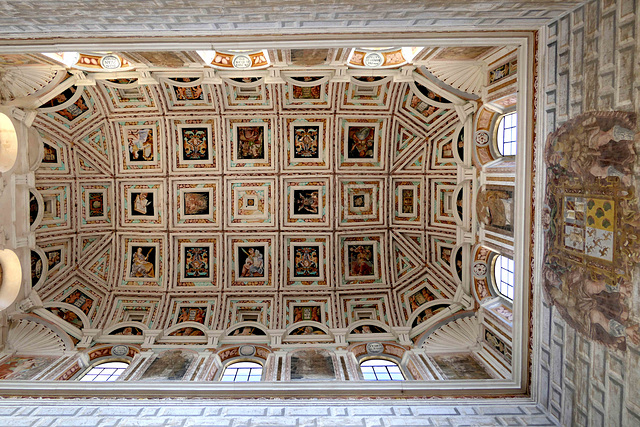Waiting For The Party To Start
Metropolitan Cathedral of Christ the King, Liverpo…
Dentiste salle d attente
HFF from Salisbury Cathedral
Curemonte Corrèze
Uganda, Inside of Minaret at Gaddafi National Mosq…
Batalha - Mosteiro da Batalha
Dome
Bragança - Igreja de Santa Maria
Austria - Kleinwalsertal/Riezlern, Mariä Opferung
Germany - Weingarten, Basilika St. Martin und Oswa…
Austria - Kleinwalsertal/Hirschegg, Hl. Mutter Ann…
Germany - Oberstaufen, St. Peter und Paul
Germany - Oberstdorf, St. Johannes Baptist
Nederland - Denekamp, Sint-Nicolaaskerk
Greece - Karpenisi, Holy Church of the Virgin Mary
Greece - Preveza, Metropolitan church of Saint Cha…
Nederland - Broek op Langedijk, Broeker Veiling
Italy - Brixen Cathedral
Katedrála svatého Bartoloměje v Plzni
La galleria per andare sul molo del porto
Bienvenue à Versailles
Winchester - Cathedral
HFF
Clamanges
Église Saint Martin à Vertus
Crypte église de Vertus
Italie Bellagio lac de Côme
Le café du Palais REIMS
Orgue Sainte Anne Bordeaux
Amazas : una galleria con oggetti in disuso
Cathédrale Sainte Cécile Albi
A Dinner With Friends
Musée d EPERNAY
Le Panthéon
MUSEE D'EPERNAY
VILLA CARLOTTA LAC DE CÔME
VILLA CARLOTTA LAC DE CÔME
VILLA CARLOTTA LAC DE CÔME
VILLA CARLOTTA LAC DE CÔME HFF
VILLA CARLOTTA LAC DE CÔME
VILLA CARLOTTA LAC DE CÔME
CÔME ITALIE
BELLANO LAC DE CÔME ITALIE
Location
See also...
Keywords
Authorizations, license
-
Visible by: Everyone -
All rights reserved
-
70 visits
Úbeda - Hospital de Santiago


During the Reconquista, in 1233, King Ferdinand III conquered Ubeda to the Kingdom of Castile. In 1368, the city was damaged during the Castilian Civil War between Peter I of Castile and Henry II of Castile. This, combined with other circumstances, caused the worsening of the rivalry between the nobel families de Trapera and de Aranda at first, and the families de la Cueva and de Molina after. This political instability was solved when the "Catholic Monarchs" ruled as they ordered the Alcázar, used by the nobility as a fortress, to be destroyed.
During the 16th century, these important Castilian aristocratic families from Úbeda reached top positions in the Spanish Monarchy administration. Notably, Francisco de los Cobos and Juan Vazquez de Molina became Secretaries of State for Emperor Charles V and Philip II respectively. Due to the patronage of arts of these competing families, Úbeda became a Renaissance focus in Spain.
Ubeda and neighboring Baeza benefited from this patronage resulting in the construction of a series of Renaissance style palaces and churches, which have been preserved ever since. In 2003, UNESCO declared the historic centres and landmarks of these two towns a World Heritage Site.
The "Hospital de Santiago" was designed by Andrés de Vandelvira in 1562 and completed in 1575. Don Diego de los Cobos, Bishop of Jaén, ordered its construction as a hospital for the sick poor as well as a church-pantheon and palace. It is now used as a cultural center, exhibition and conference center.
It is an austere work with a great volume. It features two towers at the ends of the facade and two further towers framing the large central chapel. The complex is organized around a large central courtyard.
The ceiling of the hospital´s chapel.
During the 16th century, these important Castilian aristocratic families from Úbeda reached top positions in the Spanish Monarchy administration. Notably, Francisco de los Cobos and Juan Vazquez de Molina became Secretaries of State for Emperor Charles V and Philip II respectively. Due to the patronage of arts of these competing families, Úbeda became a Renaissance focus in Spain.
Ubeda and neighboring Baeza benefited from this patronage resulting in the construction of a series of Renaissance style palaces and churches, which have been preserved ever since. In 2003, UNESCO declared the historic centres and landmarks of these two towns a World Heritage Site.
The "Hospital de Santiago" was designed by Andrés de Vandelvira in 1562 and completed in 1575. Don Diego de los Cobos, Bishop of Jaén, ordered its construction as a hospital for the sick poor as well as a church-pantheon and palace. It is now used as a cultural center, exhibition and conference center.
It is an austere work with a great volume. It features two towers at the ends of the facade and two further towers framing the large central chapel. The complex is organized around a large central courtyard.
The ceiling of the hospital´s chapel.
kiiti, Paolo Tanino, Philippe Collard, Alexander Prolygin have particularly liked this photo
- Keyboard shortcuts:
Jump to top
RSS feed- Latest comments - Subscribe to the comment feeds of this photo
- ipernity © 2007-2024
- Help & Contact
|
Club news
|
About ipernity
|
History |
ipernity Club & Prices |
Guide of good conduct
Donate | Group guidelines | Privacy policy | Terms of use | Statutes | In memoria -
Facebook
Twitter

Sign-in to write a comment.